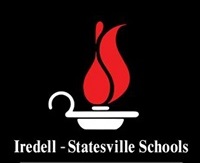
BY KARISSA MILLER
Iredell-Statesville Schools’ administrators are working on a plan to reduce staffing in an effort to offset a potential loss of more than $1 million in revenue by the end of the school year.
Operating under Plan B/A, as a result of the COVID-19 pandemic, has resulted in a reduction in revenues for student services, which the school board learned during the Committee of the Whole meeting Monday night.
Nutrition and Prime Time are being eyed for cost reductions.
“Our goal is to not have to RIF (Reduction In Force) or furlough anyone,” Superintendent Jeff James said. “We are hoping through attrition and retirements we can accomplish the goal.”
According to James, about 11 positions could be cut, including five Prime Time employees and six Child Nutrition staffers.
Administrators presented historical data on each of the programs. In response, the school board asked staff to bring back the number of employees and a comparison of prices with surrounding counties next week.
According to Associate Superintendent of Human Resources Alvera Lesane, a RIF has to be approved by the board, but employee furloughs do not.
“We are not looking to just jump in to a reduction in force, but are looking for flexibility when looking at these numbers,” Lesane said.
Lesane said administrators will look first at individuals who want to voluntarily retire or leave their positions.
She also said criteria will be established to make any decisions, including employee evaluations, attendance, disciplinary memos, seniority and other certifications.
Prime Time
“What we are trying to do is get Prime Time sustainable,” James said. “It’s going to take more than one avenue — it’s going to take looking at labor and what we charge parents.”
The projected annual loss for the district is currently $525,000. The school system is down by approximately 370 students from the 2019-2020 school year.
During Monday’s meeting, the board discussed combining Primte Time sites as a possible option. However, James said that would be difficult because it would involve transporting students from one school to another.
Prime Time is a five-star program. One of the recommendations was to make it a three- or four-star rating program.
“The star rating doesn’t negate the quality of care at the site, but the number of adults to students,” James said.
Another challenge is the price parents pay. The program has not had a price increase in nearly 20 years. The suggestion was increasing the weekly fee from $240 to $275 and the part-time fee from $159 up to $180.
This change would reduce some of the loses.
Under current economic conditions, James said, there’s no way that I-SS can absorb such a big loss from the program.
The board also asked the district to promote and market the Prime Time program in the community.
Ultimately, more students enrolling in the program will help sustain it.
Nutrition
For school nutrition, the combination of food costs, personnel and revenue losses has negatively impacted the program.
According to Chief Finance Director Melissa Wike, based on the results so far this year and considering the increased number of meals served in the first 12 days of October, the program is projected to lose $1.5 million.
Wike said the district has received $387,300 in CARES funds that will offset this loss, bringing the potential annual loss to $1.1 million.
Administrators recommended reducing the number of labor hours for full-time and part-time employees. This could save approximately $166,000 if implemented by December 1.
Secondly, the district is recommending that the high schools eliminate their Smart Lunch program.
During the 2018-2019 year, Smart Lunches resulted in a total loss of $70,000. However, should the high schools not return to in-person instruction this year, this change would not save the district any money.
According to Child Nutrition Director Tina Wilson, her department is down by 41 positions from last school year.
Also, she mentioned that many of her employees are doing “more with less,” including delivering lunches to classrooms and additional cleanup.
Many of the employees are parents of students at the schools where they work. These employees have used their employment to launch a career, which allows them to spend time with their kids and earn money for their family.
“Tina is a victim of COVID just like the other programs we have,” James said. “We have no clue when schools are going to open. We may be shut completely down before it’s said and done.”
The superintendent the district doesn’t want to let an employee go because it’s hard to get them back.
“This is one program you have to keep going and you’ve got to do it good,” said Vice Chairman Chuck Gallyon.
Chairman Martin Page added that no one on the board wants to see layoffs.
Athletics
The district could lose around $200,000 this year from interscholastic sports, which came to an abrupt end in March of 2020 due to the pandemic.
Student-athletes were allowed to return to skills development training in June of this year with the official start date of their sports delayed. High school and middle school athletic practices can officially resume on November 4.
According to Richard Armstrong, assistant superintendent of operations and athletics, all high schools follow health and safety guidelines outlined by the North Carolina High School Athletic Association.
He told the board that indoor and outdoor sporting events will be limited to a certain number of spectators, which will result in a reduction of revenues.
Next Meeting
The board will continue the discussion these topics at the board of education meeting on November 9 at 6 p.m. The meeting is open to the public and held at CATS, located at 350 Old Murdock Road in Troutman.



